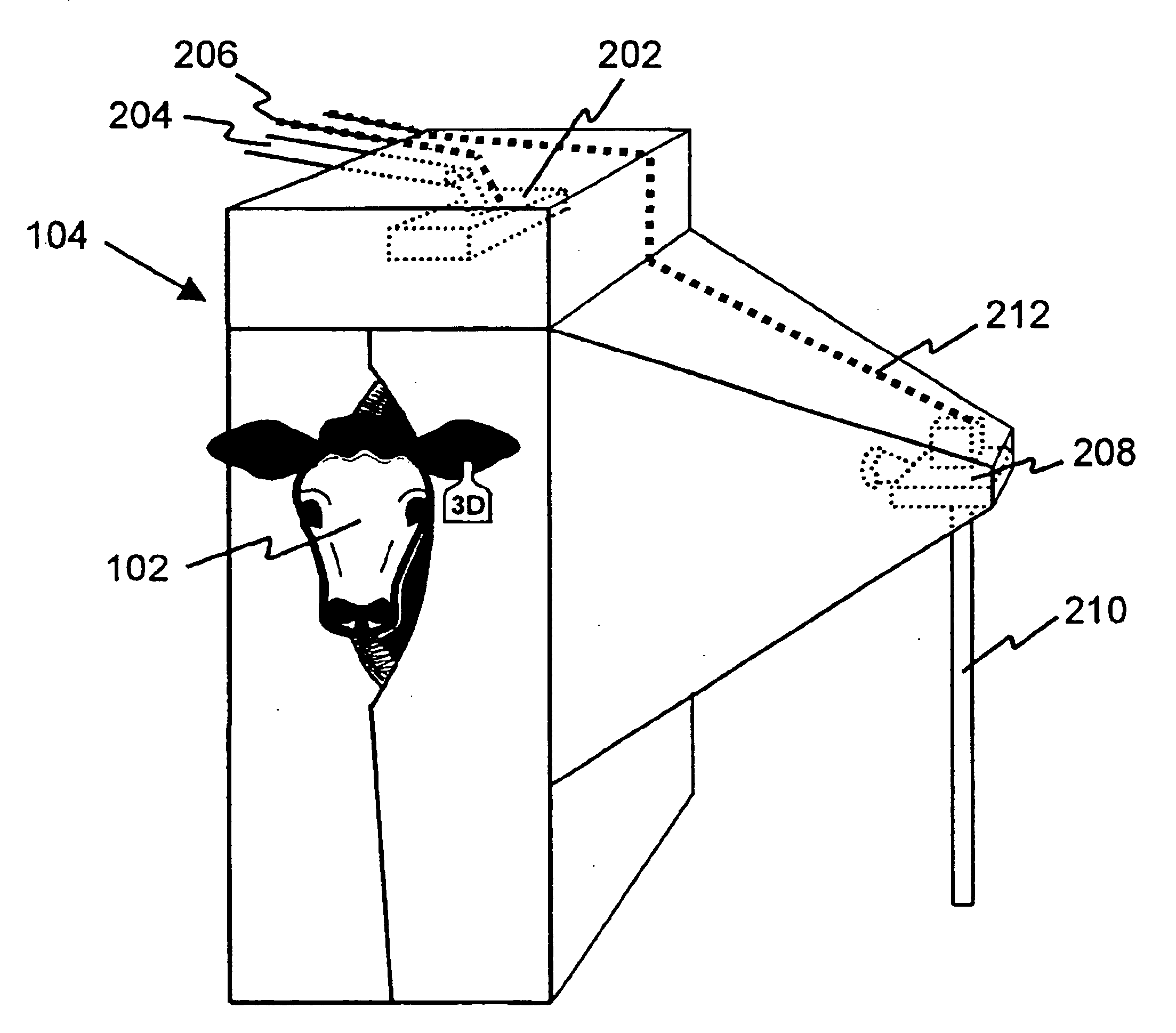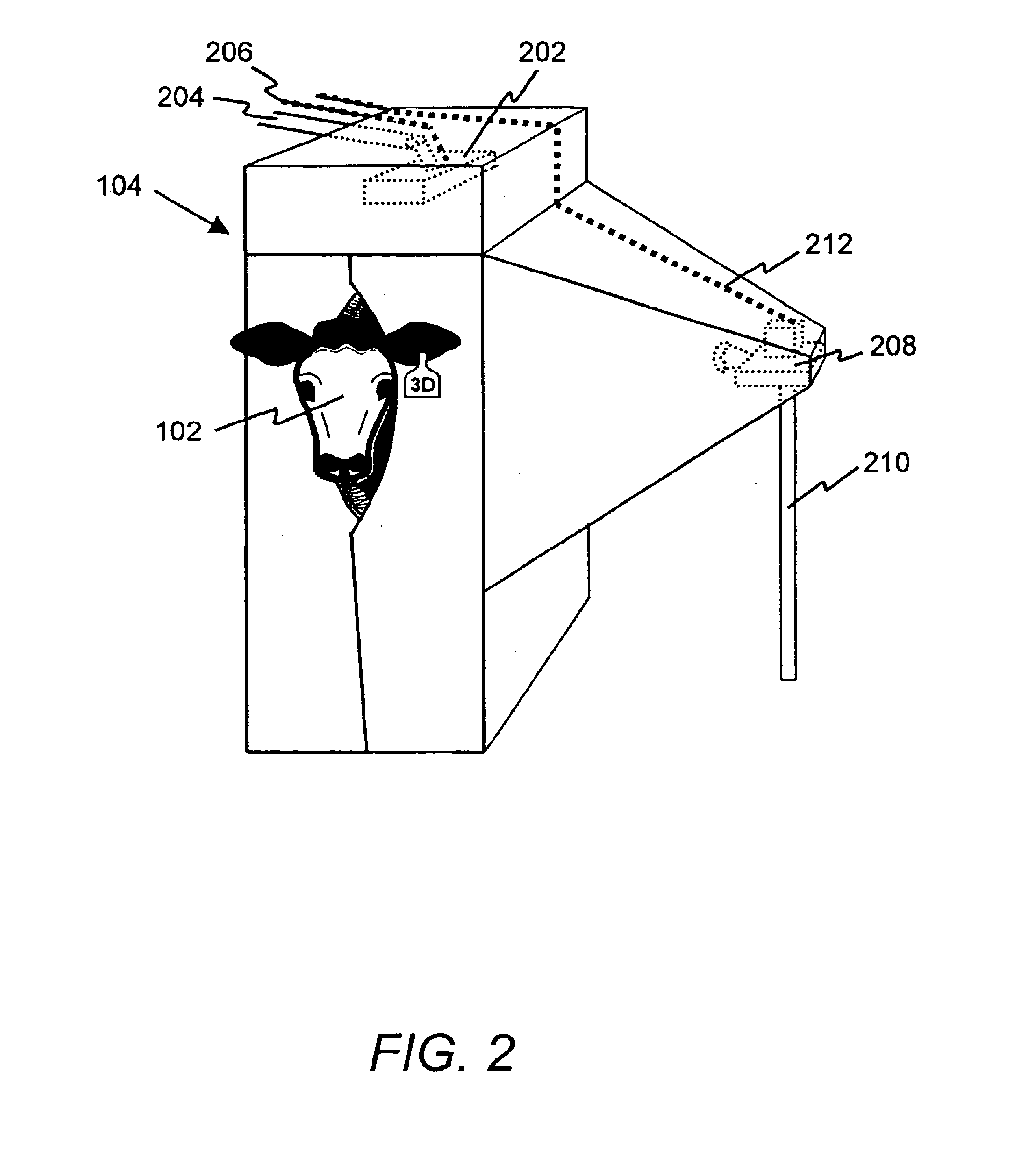Animal sorting and grading system using MRI to predict maximum value
a technology of grading system and animal, applied in the field of animal grading system using mri to predict maximum value, can solve the problems of not finding the correct 30 animals, several days of no weight gain for the remaining 270 animals, and too much fat, so as to reduce, if not eliminate, the dollar loss
- Summary
- Abstract
- Description
- Claims
- Application Information
AI Technical Summary
Benefits of technology
Problems solved by technology
Method used
Image
Examples
Embodiment Construction
the same techniques as used visually by USDA graders, including the measuring of intramuscular fat within the ribeye area as the foundation for grading carcasses and then with nomenclature translations derives palatability and yield. Belk did not describe or suggest the use of ultrasound or MRI as a means to determine palatability and yield in his original application which was filed Feb. 20, 1998. However, in his continuation-in-part application filed Aug. 19, 1999, Belk includes both ultrasound and MRI along with several other imaging means as possible systems for his image analysis (IA) system. In his Description of Illustrative Embodiment, Belk thoroughly explains the use of a color video IA system to determine palatability and yield. He also provides a very limited and very brief explanation of the use of tomographics (CAT or PET) and ultrasound for his (IA) system to secure the palatability and yield results. Belk fails to describe in any manner the means by which the MRI woul...
PUM
 Login to View More
Login to View More Abstract
Description
Claims
Application Information
 Login to View More
Login to View More - R&D
- Intellectual Property
- Life Sciences
- Materials
- Tech Scout
- Unparalleled Data Quality
- Higher Quality Content
- 60% Fewer Hallucinations
Browse by: Latest US Patents, China's latest patents, Technical Efficacy Thesaurus, Application Domain, Technology Topic, Popular Technical Reports.
© 2025 PatSnap. All rights reserved.Legal|Privacy policy|Modern Slavery Act Transparency Statement|Sitemap|About US| Contact US: help@patsnap.com



